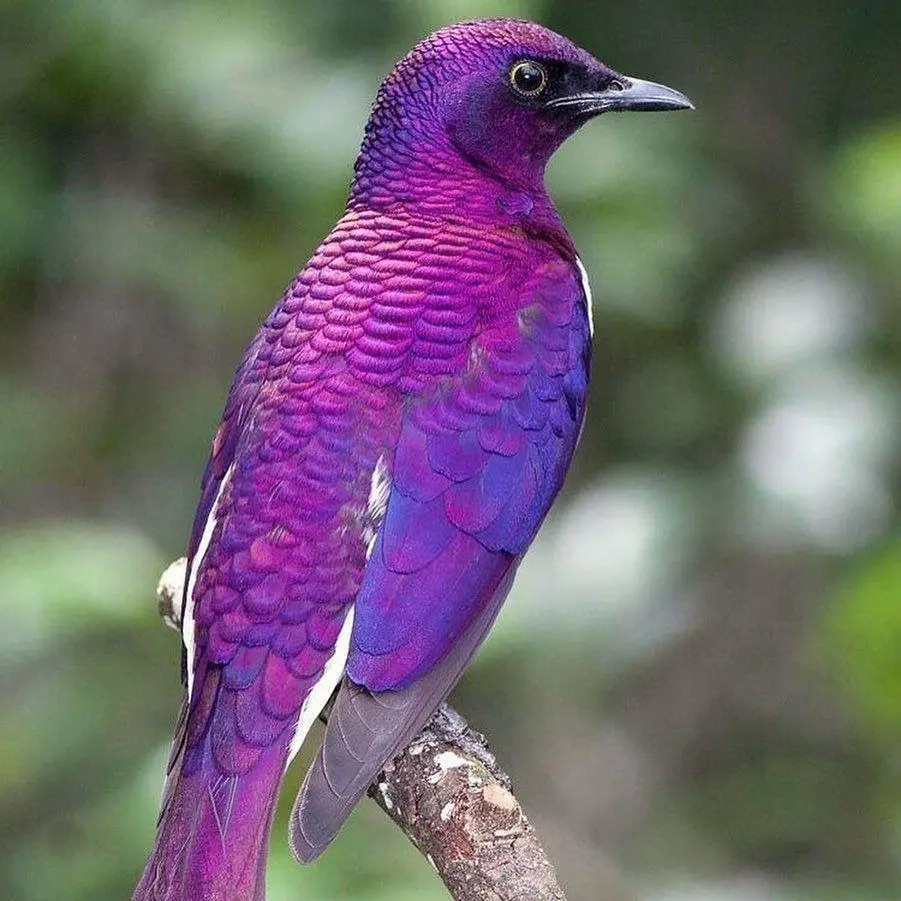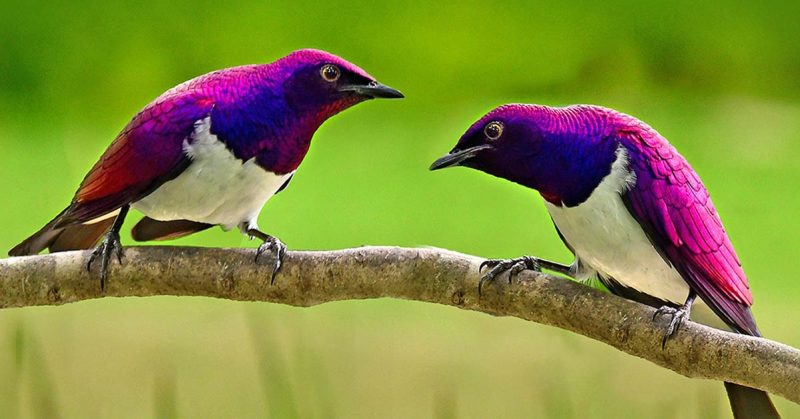Nature is a great artist and her most excellent designs come out to play in birds. It’s no wonder why there are so many species of them! The colors, the contours, the mixes, the uniqueness — bird watchers have the best hobby ever.
If you’ve ever wanted to see jewels fly, then you should see the Violet-Backed Starling that’s native to Sub-Saharan Africa. [1] Also known as the amethyst starling, these birds are a dimorphic species where the males possess a plum-violet or purple-blue streaked back, while the females are brown.
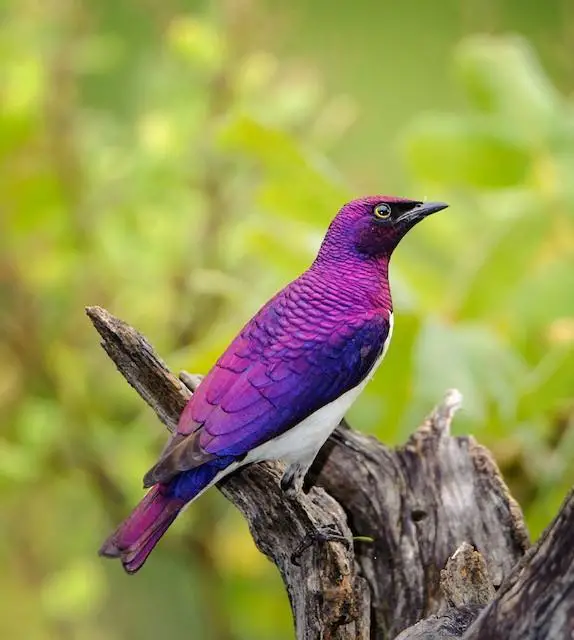
Although the sexes have extremely different colorations, their physical features are the same where both possess black beaks and lemon-yellow eyes.
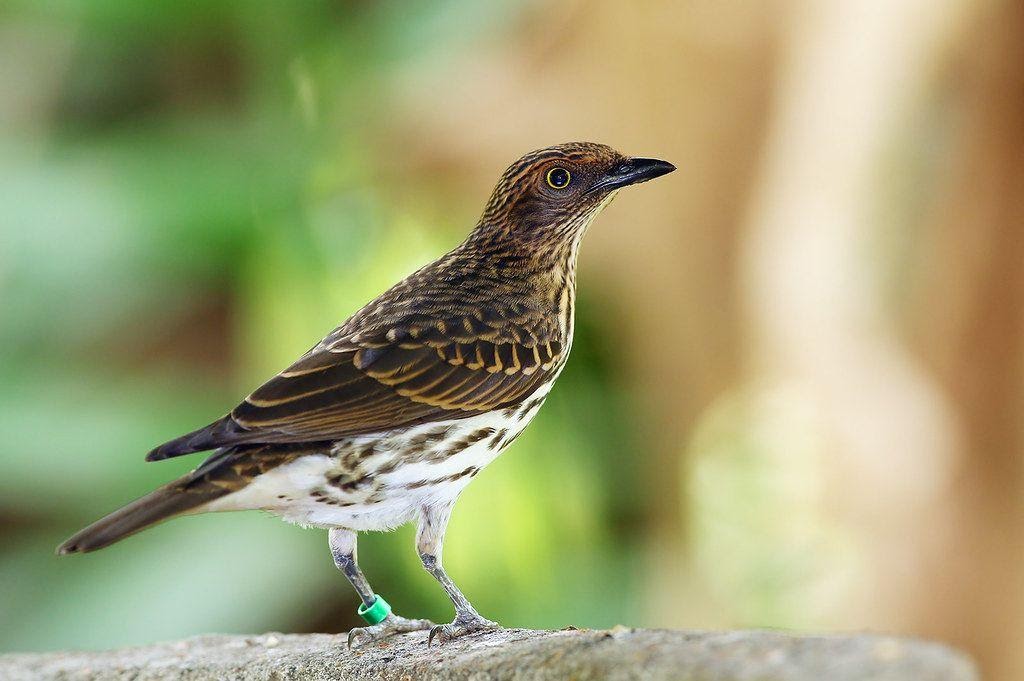
As everyone knows, starlings are a social nuisance. The European Starling, the most abundant in North America, was introduced into the continent in 1890 and has since been a thorn in people’s flesh. These birds are loud, annoying, territorial, destructive, and invasive, and they also transmit diseases. North Americans have New York pharmacist Eugene Schieffelin to thank for the nuisance. Schieffelin released 60 starlings into New York City’s Central Park in a bid to populate the continent with all the birds mentioned in Shakespeare’s plays. [2]
The Violet-Backed starlings are similar to their European cousins but a bit less annoying. They are naturally found in the savannah forest edges and woodlands of Sub-Saharan African countries, some of which include Angola, Burkina Faso, Cameroon, Republic of the Congo, Ivory Coast, Ethiopia, Ghana, Kenya, Mali, Mauritania, Namibia, Rwanda, Sierra Leone, South Africa, Tanzania, and Zimbabwe.
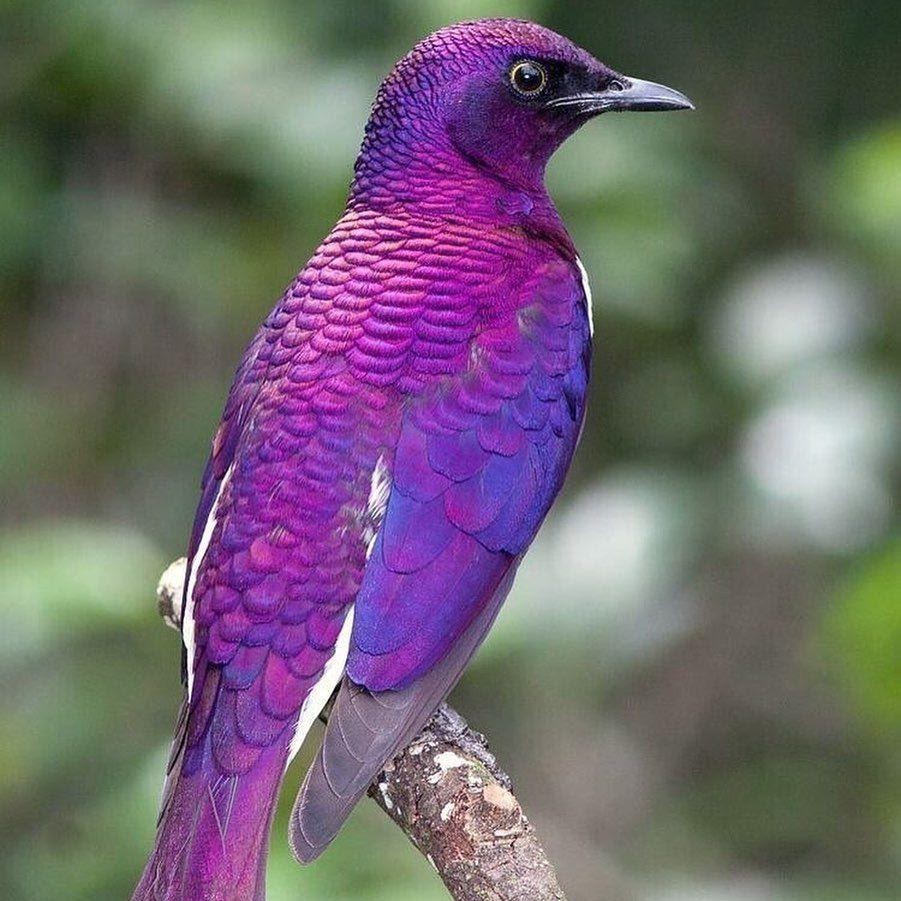
Violet eye candy
Out of 114 known starling species, all with dazzling mixtures of shiny colors, the male Violet-backed starling is the most beautiful. Like most starlings, in the sunlight, their violet backs turn to an iridescent purple shade, glossy and shiny to perfection. They have brilliantly white breasts that enhance the unique tones even more. It’s like watching your favorite jewel (amethyst) morph into a bird and glimmer in the sun.
In contrast to normal starling behavior, amethyst flocks are usually made up of birds from single sexes. During the mating season, pairs form for courtship and when it’s over, they separate into single-sex groups where the females begin preparations to lay their eggs. During breeding, the females will incubate a clutch of 2–4 eggs for 12 to 14 days. The eggs are usually a pale blue color with reddish-brown shades and are highly susceptible to predation by rodents and lizards. The males try to protect and feed the hatchlings until after about 21 days when they are ready to head out on their own.
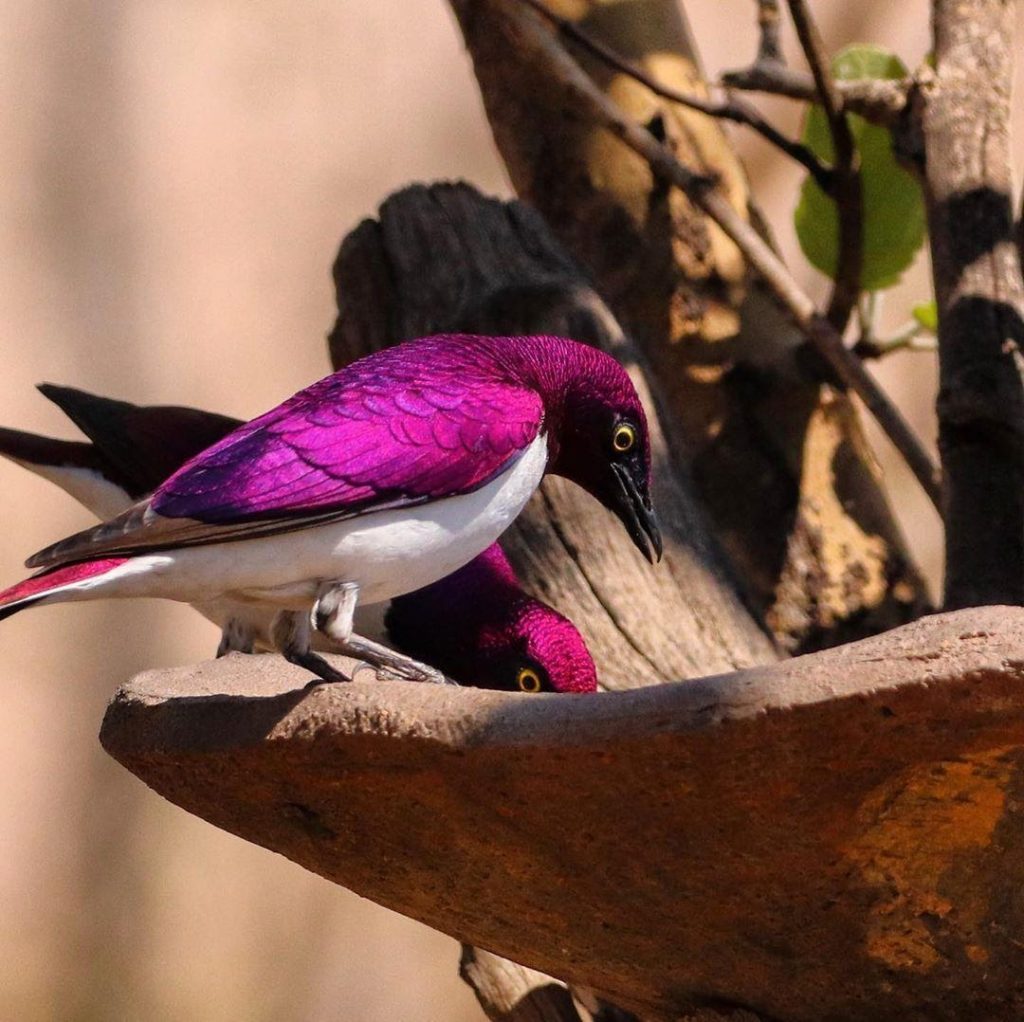
One behavior the amethysts have in common with other starlings is their ability to eat anything. Starlings are not picky eaters. Their diet consists of a wide range of choices including moths, spiders, katydids, slugs, snails, and other tiny invertebrates. They also don’t mind eating tree frogs, carrion, lizards, and a wide variety of fruits, seeds, buds, and sprouts.
Violet-backed starlings may be intensely pleasing to the eyes, but they are not exactly “birds of integrity.” They have no problems with stealing nest materials from each other — and any other species in their living space. Sometimes, they may take nests with eggs or chicks still inside. This sounds cruel, but birds have a very weird way of practicing communal living.


